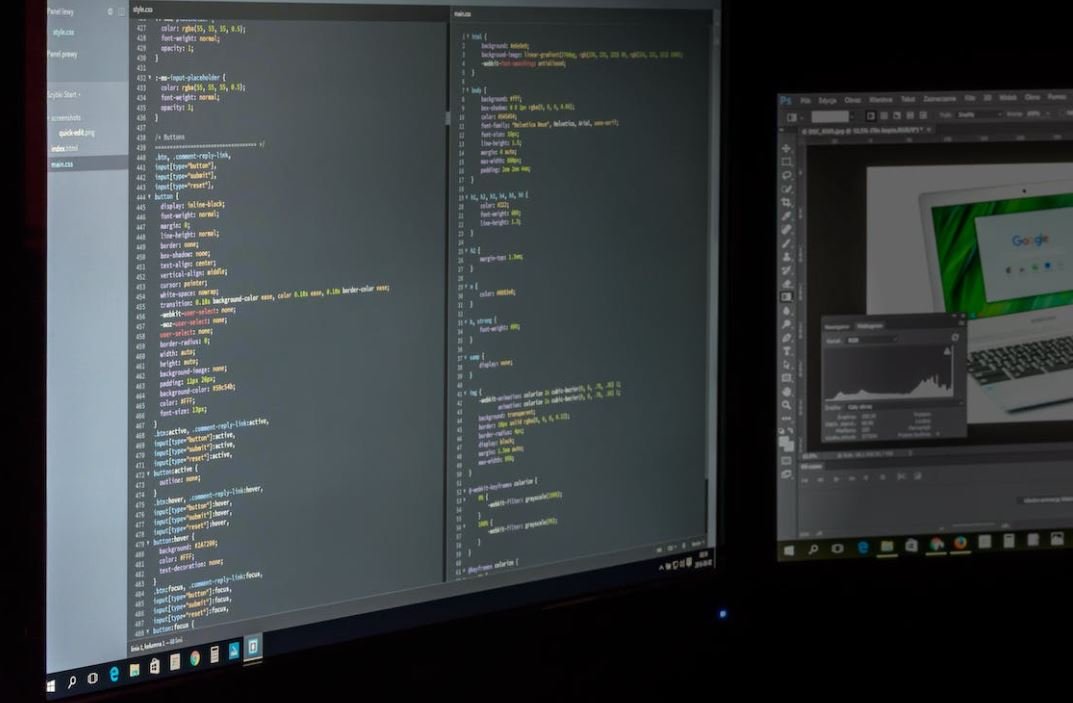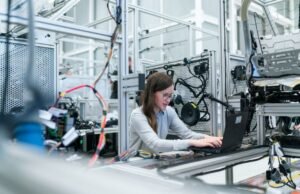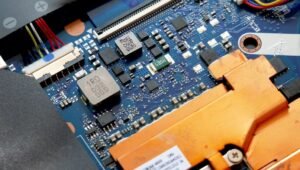Computer Science NASA
Computer science plays an essential role in the operations of NASA, the National Aeronautics and Space Administration. From creating software for spacecraft to developing algorithms for satellite navigation, computer science is integral to the success of NASA’s missions. If you’re interested in the convergence of technology and space exploration, this article will provide an overview of how computer science is applied at NASA and its significance in pushing the boundaries of space exploration.
Key Takeaways
- Computer science is crucial for the functioning and success of NASA’s operations.
- NASA utilizes computer science in various aspects, including spacecraft software and satellite navigation.
- Computer scientists at NASA contribute to cutting-edge technology advancements for space exploration.
- Collaboration between computer scientists and other disciplines is vital for NASA’s missions.
The Role of Computer Science at NASA
Computer science is integral to NASA’s space programs, supporting a wide range of activities. One primary application is spacecraft software, which controls the functioning of the vehicles during their missions. Computer scientists develop and optimize software that runs on board the spacecraft, ensuring its smooth operation and execution of missions. These software systems manage everything from life support systems to communication and data collection, making them crucial components of space missions.
In addition to spacecraft software, computer science is also employed in satellite navigation. Computer scientists develop algorithms that enable satellites and spacecraft to accurately determine their positions and navigate through space. These algorithms consider factors such as gravitational forces, orbital dynamics, and other celestial objects’ positions, ensuring precise navigation and alignment with mission objectives. Without computer science, our ability to explore space and gather data from remote areas would be severely hampered.
At NASA, computer science intersects with other disciplines to achieve remarkable feats. Computer scientists collaborate with astrophysicists, engineers, and other experts to design and build innovative instruments and systems. By combining expertise from various fields, NASA can push the boundaries of space exploration and make groundbreaking discoveries. This interdisciplinary collaboration allows computer scientists to contribute their knowledge and skills to mission-critical projects.
Applications and Impact
Computer science at NASA has far-reaching applications and impacts. Here are some examples:
- **Data Analysis:** Computer scientists at NASA develop advanced algorithms and data processing techniques to analyze the massive amounts of data collected from space missions. These analyses lead to new discoveries, contribute to scientific research, and advance our understanding of the universe.
- **Autonomous Systems:** NASA utilizes autonomous systems that leverage computer science to operate and perform tasks independently. These systems help spacecraft make intelligent decisions, adapt to changing environments, and react to unforeseen circumstances, reducing the need for constant human intervention.
- **Spacecraft Simulation:** Computer scientists create realistic and complex simulations to test spacecraft designs, systems, and operations before actual launch. By simulating various scenarios, engineers can identify and address potential issues, ensuring the safety and success of missions.
Table 1: Key Contributions of Computer Science at NASA
| Application | Impact |
|---|---|
| Spacecraft Software | Enables mission control and systems functioning |
| Satellite Navigation | Precise positioning and trajectory calculations |
| Data Analysis | New discoveries and scientific research |
Collaboration and Future Exploration
Computer science’s collaboration with other disciplines is crucial for NASA’s future exploration efforts. As we venture further into space, the complexity of missions requires expertise from diverse fields. Computer scientists will continue to work alongside engineers, astrophysicists, mathematicians, and other experts to develop cutting-edge technologies and systems.
Furthermore, the advancements made in computer science at NASA have significant applications beyond space exploration. Technologies developed for NASA missions often find their way into everyday life, benefiting industries such as transportation, communication, and medical research. The impact of computer science extends far beyond the confines of our planet.
Table 2: Notable Technologies Developed by NASA’s Computer Science
| Technology | Impact |
|---|---|
| GPS | Global navigation and positioning system |
| Solar Energy Systems | Efficient use of renewable energy sources |
| Artificial Intelligence | Advancements in robotics and automation |
Computer science plays a critical role in NASA’s ongoing missions and its potential for future exploration. Whether it’s developing spacecraft software, enabling precise navigation, or collaborating with experts from various fields, computer science drives innovation and expands the boundaries of our knowledge about the universe. As we continue to explore the final frontier, computer science will be at the forefront, powering our journey of discovery and understanding.
Table 3: Ongoing Missions Utilizing Computer Science
| Mission | Objective |
|---|---|
| Mars Perseverance Rover | Exploration of Mars’ geology and search for signs of past life |
| Juno | Study of Jupiter’s composition, gravity, and magnetic fields |
| Hubble Space Telescope | Astronomical observation and capturing stunning images of distant celestial objects |

Common Misconceptions
1. Computer Science is only about coding
One common misconception about computer science is that it solely focuses on coding and programming. In reality, computer science is a broad discipline that covers a range of topics beyond just coding.
- Computer science involves problem-solving and algorithm design.
- It includes areas such as artificial intelligence, data analysis, and cybersecurity.
- Computer scientists also study theoretical aspects of computation and algorithms.
2. You need to be a math genius to study computer science
Many people believe that computer science requires advanced math skills and that only math geniuses can succeed in the field. However, while math is certainly beneficial in computer science, it is not the sole determinant of success.
- Basic math skills such as algebra and calculus are sufficient for many areas of computer science.
- Problem-solving and logical thinking play a more significant role in computer science.
- Many computer science concepts can be learned and applied without deep knowledge of advanced mathematics.
3. Computer scientists can fix any computer-related problem
An often misunderstood notion is that computer scientists are experts who can fix any computer-related problem. While computer scientists possess a deep understanding of computer systems and technology, their expertise does not necessarily extend to hardware or everyday computer issues.
- Computer scientists typically focus on developing software and designing algorithms.
- Hardware-related issues are commonly addressed by computer engineers or IT professionals.
- Computer scientists may have knowledge in certain hardware aspects, but their primary area of expertise lies in software and theoretical principles.
4. All computer science jobs involve long hours of coding
Another misconception is that all computer science jobs entail long hours of coding in isolation. While coding is undoubtedly a crucial aspect of many computer science jobs, it is not the only task that computer scientists undertake on a daily basis.
- Computer scientists engage in problem-solving and algorithm design, which involves conceptual and strategic thinking.
- They collaborate with teams to develop and maintain software systems.
- Some computer science jobs focus more on research, data analysis, or project management, requiring less coding time.
5. Computer science is a male-dominated field
One of the prevailing misconceptions surrounding computer science is that it is predominantly a field dominated by males. Although it is true that historically women have been underrepresented in the field, efforts to increase diversity and inclusion are underway.
- Initiatives and organizations are working to encourage more women to pursue computer science.
- Many universities and companies are actively promoting diversity in hiring and leadership positions.
- Women are making significant contributions to the field of computer science, and their presence continues to grow.

NASA Budget Allocation Breakdown
NASA’s budget allocation for the fiscal year of 2022 is outlined in the table below. This breakdown reflects the agency’s focus areas and investment in various programs and initiatives.
| Area | Percentage |
|---|---|
| Human spaceflight | 37% |
| Science | 26% |
| Aeronautics | 11% |
| Space technology | 9% |
| Exploration systems | 7% |
| Education | 5% |
| Space operations | 3% |
| Cross-agency support | 2% |
Achievements of the Hubble Space Telescope
The Hubble Space Telescope has immensely contributed to our understanding of the universe. Some of its remarkable achievements are listed in the table below.
| Discovery | Description |
|---|---|
| Observing distant galaxies | Hubble helped us determine the age of the universe and investigate early galaxy formation. |
| Mapping dark matter | By observing the distortion of light, Hubble mapped areas of dark matter, revealing its distribution. |
| Exoplanet identification | Hubble played a crucial role in discovering exoplanets orbiting stars beyond our solar system. |
| Exploring nebulae | Through detailed observations, Hubble revealed the complexity and beauty of various nebulae. |
Rocket Launch Success Rates
The success rates of different rocket launch providers are presented in the table below. These percentages reflect the rate of successful launches for each provider over a significant period.
| Rocket Launch Provider | Success Rate |
|---|---|
| SpaceX | 93% |
| United Launch Alliance | 99% |
| Arianespace | 96% |
| Blue Origin | 89% |
Popular Programming Languages in Computer Science
The following table displays some of the most popular programming languages used in computer science, based on their demand, versatility, and community support.
| Programming Language | Main Applications |
|---|---|
| Python | Data analysis, artificial intelligence, web development |
| Java | Enterprise software, Android app development |
| C++ | Game development, systems programming |
| JavaScript | Web development, front-end frameworks |
Advancements in Quantum Computing
The rapid progress in quantum computing is highlighted in the table below, demonstrating the number of qubits achieved by various companies and research institutions.
| Company/Institution | Number of Qubits |
|---|---|
| IBM | 65 |
| 53 | |
| Microsoft | 40 |
| Rigetti Computing | 32 |
Operating Systems Market Share
The market share of popular operating systems is represented in the table below, giving a glimpse of the dominance of certain platforms in the digital landscape.
| Operating System | Market Share |
|---|---|
| Windows | 77% |
| Mac OS | 18% |
| Linux | 2% |
| Chrome OS | 1% |
Global Internet Usage Statistics
The table below provides an overview of global internet usage statistics as of the most recent data available, giving insight into the vastness and impact of the internet.
| Statistic | Value |
|---|---|
| World Population | 7.9 billion |
| Internet Users | 4.9 billion |
| Penetration Rate | 62% |
| Social Media Users | 4.2 billion |
Employment Opportunities in the Tech Industry
The tech industry offers a broad range of employment opportunities. The table below presents the projected growth rates and median salaries for selected tech occupations.
| Occupation | Projected Growth Rate | Median Salary |
|---|---|---|
| Data Scientist | 31% | $126,930 |
| Software Developer | 22% | $110,140 |
| Cybersecurity Analyst | 31% | $103,590 |
| Artificial Intelligence Engineer | 45% | $146,080 |
Conclusion
Computer science, with its diverse domains and evolving technologies, plays a pivotal role in numerous fields, including space exploration, programming, quantum computing, and beyond. From NASA’s budget allocation to the achievements of the Hubble Space Telescope, the tables above provide a glimpse into the fascinating world of computer science. The data presented reveals the innovative advancements and widespread impact of the industry, solidifying its importance in shaping our future.
Frequently Asked Questions
Question 1: What is Computer Science?
Computer Science is the study of computers and computational systems, including their design, development, and application in various fields.
Question 2: What is NASA?
NASA, also known as the National Aeronautics and Space Administration, is an independent agency of the United States federal government responsible for the nation’s civilian space program and for aeronautics and aerospace research.
Question 3: How does Computer Science relate to NASA?
Computer Science plays a vital role in NASA’s operations. It is used extensively in the design and development of spacecraft, the analysis of space data, simulation of space missions, and the development of advanced technologies used in space exploration.
Question 4: What are some notable Computer Science applications in NASA?
Some notable applications of Computer Science in NASA include spacecraft guidance systems, trajectory calculations, satellite image processing, data analysis for scientific research, and the development of sophisticated software tools used by astronauts and mission operators.
Question 5: Can Computer Science help in space exploration?
Absolutely! Computer Science has played a crucial role in enabling and enhancing space exploration. It has helped in developing autonomous robots for planetary exploration, simulating complex space missions, analyzing vast amounts of space data, and supporting the communication and collaboration between scientists and engineers working on space missions.
Question 6: What are the career opportunities in Computer Science at NASA?
There are numerous career opportunities for Computer Science professionals at NASA. Some examples of job roles include software engineer, data scientist, computer systems analyst, robotics engineer, artificial intelligence specialist, and cybersecurity analyst.
Question 7: How can I prepare for a career in Computer Science at NASA?
To prepare for a career in Computer Science at NASA, it is recommended to pursue a relevant degree in Computer Science or a related field. Additionally, gaining practical experience through internships, participating in coding competitions, and staying updated with advancements in the field will greatly enhance your chances.
Question 8: Are there any NASA programs or initiatives specifically focused on Computer Science?
Yes, NASA has several programs and initiatives focused on Computer Science. For example, the NASA Computer Science Research Program funds research projects that advance the state of the art in Computer Science and address challenges specific to NASA’s missions. Additionally, NASA offers internships, scholarships, and fellowships in Computer Science-related fields.
Question 9: How can I stay updated with Computer Science developments at NASA?
To stay updated with Computer Science developments at NASA, you can visit the official NASA website and explore the sections related to Computer Science and technology. Additionally, you can follow NASA’s social media accounts, subscribe to their newsletters, and participate in webinars and seminars conducted by NASA’s researchers and engineers.
Question 10: How can I get involved with Computer Science projects at NASA?
If you are interested in getting involved with Computer Science projects at NASA, you can explore the NASA Open Innovation Competitions, join NASA’s online communities where you can collaborate with other enthusiasts, and apply for internships or research opportunities offered by NASA in collaboration with universities and other institutions.




